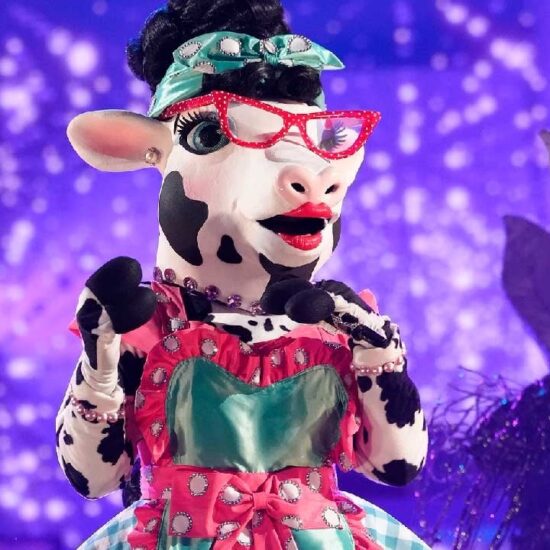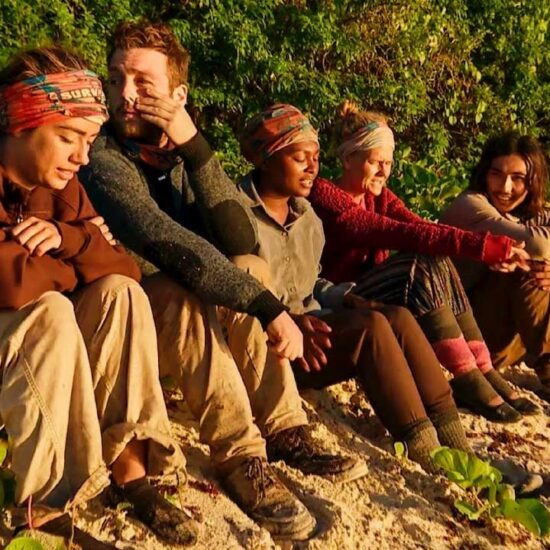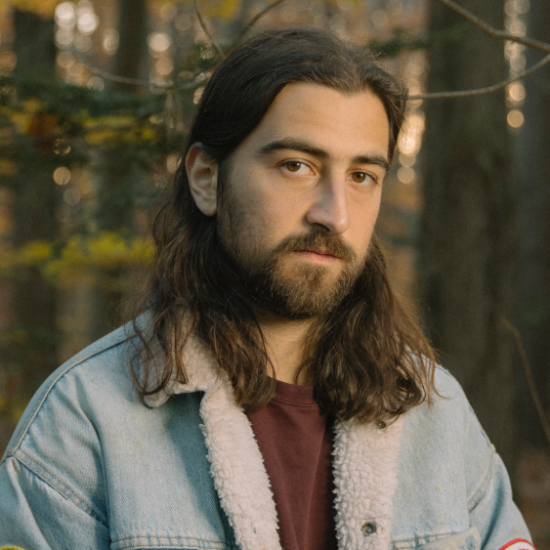
Disclaimer: Your humble recapper is not, in any sense, a gamer. I wasted little of my youth in 1980s arcades and dabbled briefly in Plants Vs. Zombies on early iPads, but the nearest I get to MMORPG is morning Wordle over coffee. Perhaps that makes me more qualified to cover The Last of Us, the luxe series based on the 2013 PlayStation hit that follows a grizzled survivor of a fungal zombpocalypse as he smuggles cross-country a Very Important Girl who may hold the key to humanity’s future. I have zero stake in how faithful the series is.
But I do enjoy action and undead body counts set against an entropic wasteland. So, as a scrupulously gritty and unpredictable action yarn, The Last Of Us is off to a smashing start. The 80-minute pilot unfolds with a savvy balance of simmering dread and well-choreographed violence, and Pedro Pascal is a solid choice—brawny, melancholy—to shepherd us through a hellscape of fungal flesh-eaters, outlaws, and fascist soldiers.
To be honest, the bar is low—even if the budget’s not. HBO wants to lay out a hundred million bucks to prove it can transmute joystickery into prestige TV? Fine. Time will tell if The Last Of Us can transcend genre limitations to become more than a slick synthesis of Children Of Men, the Walking Dead franchise, and any other zombie/dystopian title you care to mention.
The true reference point is HBO’s 2019 sleeper hit, Chernobyl, passion project of Craig Mazin, who partners here with Last Of Us game creator Neil Druckmann. Both executive produce and write the nine-part first season, maintaining a strong emotional through-line for reluctant hero Joel Miller (Pascal), who—spoiler alert—loses his daughter in a spectacular 30-minute prologue. Chernobyl is a meticulous and grimly compelling account of the 1986 nuclear disaster that revealed not only deadly flaws in the power plant design but also systemic political corruption in the Soviet Union. It was an exposé of government failing the public in a time of crisis—and resonated quite naturally when the pandemic hit a year later.
G/O Media may get a commission

Up to $100 credit
Samsung Reserve
Reserve the next gen Samsung device
All you need to do is sign up with your email and boom: credit for your preorder on a new Samsung device.
The Last Of Us is also a moral and societal test in the aftermath of disaster. As fungal infection robs people of their personhood and reduces them to targets for violence, the uninfected must protect their own humanity from mutating into mindless animal reflex. Characters crawl across the ruins of the past, unsure where they’re going—backwards or forwards. A watch that Joel wears is busted; the time is out of joint.
Before we get to that broken future, Mazin and Druckmann push us further back. At the top of the pilot it’s 1968, and a Dick Cavett-like talk show host interviews two scientists about pandemics. One scoffs at the danger posed by viruses. We’ll survive those, he says. It’s fungus we must worry about. After jokey banter from the host, the Scots egghead name-drops a few fungi we should watch out for, including Cordyceps. He speculates that a human-infecting fungus could emerge if the world’s temperature rises. Fungi infect and take over insect hosts but can’t survive the heat of the human body. However, what if the microorganisms were forced to evolve due to climate change? Then we’d have “billions of puppets with poisoned minds,” the scientist says, “permanently fixed on one unifying goal: to spread the infection to every last human alive.”
The camera cuts to the audience, still and expressionless as they listen as one passive organism. (One senses Mazin—who directs with bleakly intimate cinematography by Ksenia Sereda—drawing a subtle comparison between fungal infection and mass-media consumption.)

Our story shifts to Austin, Texas, 2003. It’s blue-collar, single dad Joel’s 36th birthday and his teenage daughter Sarah (Nico Parker) is making him breakfast. Joel and brother Tommy (Gabriel Luna) work in road construction. As they load the truck and prepare to drop Sarah off at school, she sneaks into Joel’s bedroom dresser and grabs a watch and money; she’s getting the watch fixed for his birthday. Sarah also discovers and fiddles with a fierce-looking folding knife (similar type of weapon another young woman wields later).
It’s an ordinary day: Sarah attends classes, stops at a repair shop, and later visits the elderly neighbors, the Adlers, who are fond of the girl. Into this gentle suburban scene, Mazin and Druckmann slip a deft bit of dreadful foreshadowing: As Sarah scans a shelf of DVDs, in the blurry background the dementia-afflicted grannie starts to twitch and spasm. Moments later, the family dog, Mercy, stares worriedly at the old woman and whines.
Joel comes home late and exhausted. After playfully barbed banter with Sarah—who presents him with the watch—they settle in to screen a fictional ninja movie called Curtis And Viper 2. Sarah falls asleep. Joel gets a call from Tommy, who says he’s in jail after a bar fight with some rando who started freaking out and swinging at a waitress. Joel puts a still-sleeping Sarah in bed and drives out to bail his brother out.
Three hours later, Sarah wakes up and the world is going to hell. She hears distant explosions. Helicopters are flying way too low. Mercy is frantic and refuses to go back into the Adlers’ house. Where’s dad? When Sarah enters the Adler house (don’t go there, Sarah!), she is confronted with a dead-eyed grannie chowing down on her daughter-in-law’s brains, while her son bleeds out just feet away. Sarah runs, grannie sprints after her, and outside on the lawn, Joel and Tommy roar up in the truck. Joel takes out the old lady with a monkey wrench to the skull.
At this point, the episode lifts sequences from the game: the quietly tense scene of Joel, Tommy and Sarah driving at night, passing burning buildings and people stranded on the side of the road begging for a ride. As they try to leave the city by driving through it, chaotic panic rises, with mobs of desperate people blocking roads as the infected pounce, cars smashing into each other, and finally, most terrifyingly, a jumbo crash-lands a few blocks away. A flying hunk of debris crashes into the car and Sarah is knocked momentarily unconscious.
When she comes to, Joel and Tommy are okay, but they have to leave the car and continue on foot. Sarah’s ankle is injured, so Joel carries her. Tommy, armed with a long gun, says he’ll meet them down by the river. Joel and Sarah arrive, but they are confronted by an armed soldier in body armor. The soldier radios back to HQ, and clearly gets the order to execute, assuming that Sarah’s injury is a bite. Joel begs him not to, but the soldier fires and Sarah receives fatal wound to the abdomen. Before the soldier can finish off Joel, Tommy takes him out. Sarah dies in her sobbing, blood-stained father’s arms.
Now it’s twenty years later. Boston. The city is unrecognizable, overgrown with vines, weeds, moss, and endless acres of crumbled buildings and rusted cars. Beantown is a bombed out, militarized quarantine zone. Mad Max: Beyond Thunderdome without the leather and Tina Turner. A young boy staggers through the wilderness at the edge of the city. He has a cut on his knee. Cut or bite? Either way, he’s euthanized by soldiers and thrown in the back of truck to be burned in a mass pyre.

That’s where we catch up with Joel, now 56 and a hardened survivor (is there any other type?) who does various grunt work in the quarantine zone (QZ)—tossing bodies on the fire, shoveling up ashes, flushing the sewers. Workers are paid in food ration cards. Joel takes a break from watching a public execution of lawbreakers to deal pills to a soldier.
So odious is life under martial law, an antifa militia has formed: the Fireflies. This rebel outfit conducts an ongoing street war with the occupying army, a.k.a. FEDRA. They are also holding a mysterious young teen, Ellie (Bella Ramsey, credibly American) in one of their safe houses, chained to the radiator. Firefly leader Marlene (Merle Dandridge) knows the girl’s significance, but the rest of the Fireflies are kept in frustrated ignorance. As Marlene woodenly explains to her lieutenant, Kim (Natasha Mumba), by way of a reality check: “We are in a war against a military dictatorship to restore democracy and freedom.”
Not every bit of dialogue in the Mazin-Druckmann script sings, but it’s decent stuff compared to the bland, expository filler you get in the game, where half the lines are banal small talk along the lines of, “You okay?” “We can rest here,” or “Let me get the plank so we can cross.”
Joel’s (platonic) partner in crime is the equally tough Tess (Anna Torv, magnetic and edgy as always), who we meet being interrogated by the lowlife gangster Robert (Brendan Fletcher). A surprise explosion (from a nearby battle between Fireflies and FEDRA) allows Tess to escape. When the battered but still determined Tess shows up at Joel’s apartment, she explains the plan: find Robert, get their stolen car engine and money back, and kick his ass. Then Joel can head to Wyoming to find Tommy, who hasn’t been responding via underground radio.
When they go and confront Robert (an extended stalk-and-kill sequence in the game), they find him and several of his goons already wasted in a bloodstained hallway. Robert tried to sell a dud car battery to Marlene and the deal went south. Marlene is bleeding out from a shot in her side. Kim has an ear blown off. They make a deal with Joel and Tess: get Ellie across town to the State House and into the hands of a squadron of Fireflies, and in return they get ammo, supplies, and a car to get them out of the QZ.
There’s definitely no “meet cute” between Ellie and her new bodyguards: They have negative-zero parental instincts toward the stone-faced, defiant teen who keeps her switchblade close and is quick with a “fuck you” to any stranger she meets.
Joel takes Ellie to his apartment to rest before nightfall. As he confers with Tess outside in the hallway, Ellie leafs through a book of hit pop songs, finding a paper with a code inserted in the pages. The clever girl soon figures out the radio broadcasts smuggling code: Songs from the ’60s mean nothing new; ’70s means new contraband has arrived; and ’80s means something bad. Neither Joel nor Tess knows why the girl is so important. She used to be in FEDRA military school, but was busted out by Marlene, who knew the girl’s mother.

Rain is pouring as Joel, Tess, and Ellie head out. They navigate their way outside the barrier, hauling themselves up through secret holes and a raggedy culvert…until they come face to face with a young soldier Joel sold pills to earlier. This expertly orchestrated scene pulls together all the emotional strands of the episode. When the soldier checks them for infection, Ellie’s test flashes red, the soldier freaks out, and she impulsively sinks her switchblade into his leg.
Joel immediately flashes back to the soldier who shot Sarah twenty years ago. He goes into a berserker rage and pummels the soldier’s face to red mush. Ellie looks on, horrified but fascinated. Tess and Joel are of course alarmed that Ellie tested positive—should they kill the girl?—but Ellie shows a bite on her arm and says it’s three weeks old. It takes only a day or two for people to turn. Trauma, inhuman violence, fear of infection, fragile trust—it’s all there.
As the trio make their way to the Massachusetts State House in darkness and rain, the camera cuts back to Joel’s apartment. The radio comes to life with Depeche Mode’s “Never Let Me Down Again.” A tune from 1987. Code for “trouble,” which comes as no surprise. “I’m taking a ride with my best friend,” the lyrics go, “I hope he never lets me down again.” Here’s Joel’s chance to move forward, to start time again. He can never get Sarah back, but he can help another girl who may be the key to saving them all.
Stray observations
- The world building is impressive, but I have epidemiological questions. We had more mask vigilance around Covid-19 than these folks do while burning or head-stomping the infected. In the game, Joel and Tess slip on gas masks around spore clouds. How are airborne Cordyceps spores not…everywhere?
- In her grammar class, Sarah glances over at a fellow classmate, whose left hand is jerking either weirdly or as a nervous tic. Nice pre-outbreak touch.
- Sarah jokes that she dealt drugs to pay for Joel’s repaired watch, ironically twisted when twenty years later, he’s selling pills.
- The faded pink T-shirt Sarah wears pre-infection is for a fictional touring band: Halican Drops. Just one of many details ported over from the game.
- The book in which Joel stashes his radio signal key is Fred Bronson’s The Billboard Book Of Number One Hits © (conveniently) 2003.
- The fungal expert who chills us to the bone in 1968 is played by fine Scots thespian John Hannah. His undead genre bona fides? Playing ne’er-do-well playboy Jonathan Carnahan in The Mummy franchise.
- How much HBO cash does it take to turn Calgary into a quarantine zone? Apparently more than building Westeros in Northern Ireland. The annual budget is reportedly more than that of each of the first five seasons of Game Of Thrones. Inflation much?
- Gamers may know the answer: What happened to Joel’s wife and Sarah’s mother? Dead? Left them? Something for a later episode.
- Bumper sticker on Tommy’s truck notes a Desert Storm combat vet. Hence his excellent marksmanship.














